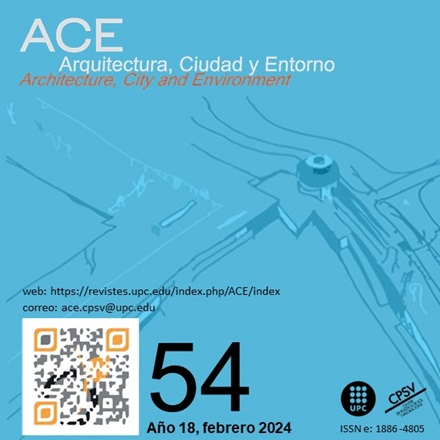The Impact of Passages on Street Connectivity in Commercial Areas: The case of Besiktas market area in Istanbul
DOI:
https://doi.org/10.5821/ace.18.54.12088Keywords:
spatial integration, street connectivity, pedestrian volume, route choiceAbstract
Passages, an important and conventional building typology of the urban fabric, are about to disappear in today's globalized cities. Previous research theoretically assumes that passages allow continuous flow of public spaces, support accessibility, and enhance street vitality. However, there is not enough evidence to provide their potential for improving connectivity. This study aims to investigate how passages affect street connectivity physically and visually and thus how they improve spatial integration in street networks. The field study was conducted in a small-scale commercial market area, in which there are many interconnected passages. The methodology consists of axial, segment and visibility graph analyzes of space syntax, and a systematic observation of pedestrian volume and route choices. Our findings suggest that passages increase physical and visual connectivity and spatial integration by providing many diverse, short, and alternative routes for movement within the street network. However, the findings also showed that the effective use of the passages is predominantly associated with their spatial attributes. As long as passages have short and direct corridors, providing connections in different directions, they can contribute to the accessibility of streets and the vitality of cities.
Published
Issue
Section
License
| INTELECTUAL PROTECTION CRITERIA |
At this moment, it is count with the "Oficina Española de Patentes y Marcas", while global protection it is being processed by the World Intelectual Property Organization (OMPI/WIPO). Nevertheless the International Standard Serial Number Office (ISSN) has given the following numbers ISSN: 1886-4805 (electronic version) and 1887-7052 (paper version). All articles will be peer reviewed, using double blind reviewing. |
| COPYRIGHT |
The article contents and their comments are authors exclusive liability, and do not reflect necessarily the journal editor commitee's opinion. All ACE published works are subject to the following licence CC BY-NC-ND 3.0 ES http://creativecommons.org/licenses/by-nc-nd/3.0/es/ It implies that authors do not hold nor retain the copyright without restrictions but only those included in the licence. |





































